i am trying to get a 3x3 matrix with multiplexing up and running. here is my setup:

i have connected each rows cathodes and each columns anodes and connected that one to pins 0,1,2 resp. 8,9,10
the only thing i can get to light is the lowest row, but if i want to light the middle row for example with this:
digitalWrite(8, HIGH);
digitalWrite(9, HIGH);
digitalWrite(10, HIGH);
digitalWrite(0, HIGH);
digitalWrite(1, LOW);
digitalWrite(2, HIGH);
nothing happens.
is my wiring setup wrong maybe?
